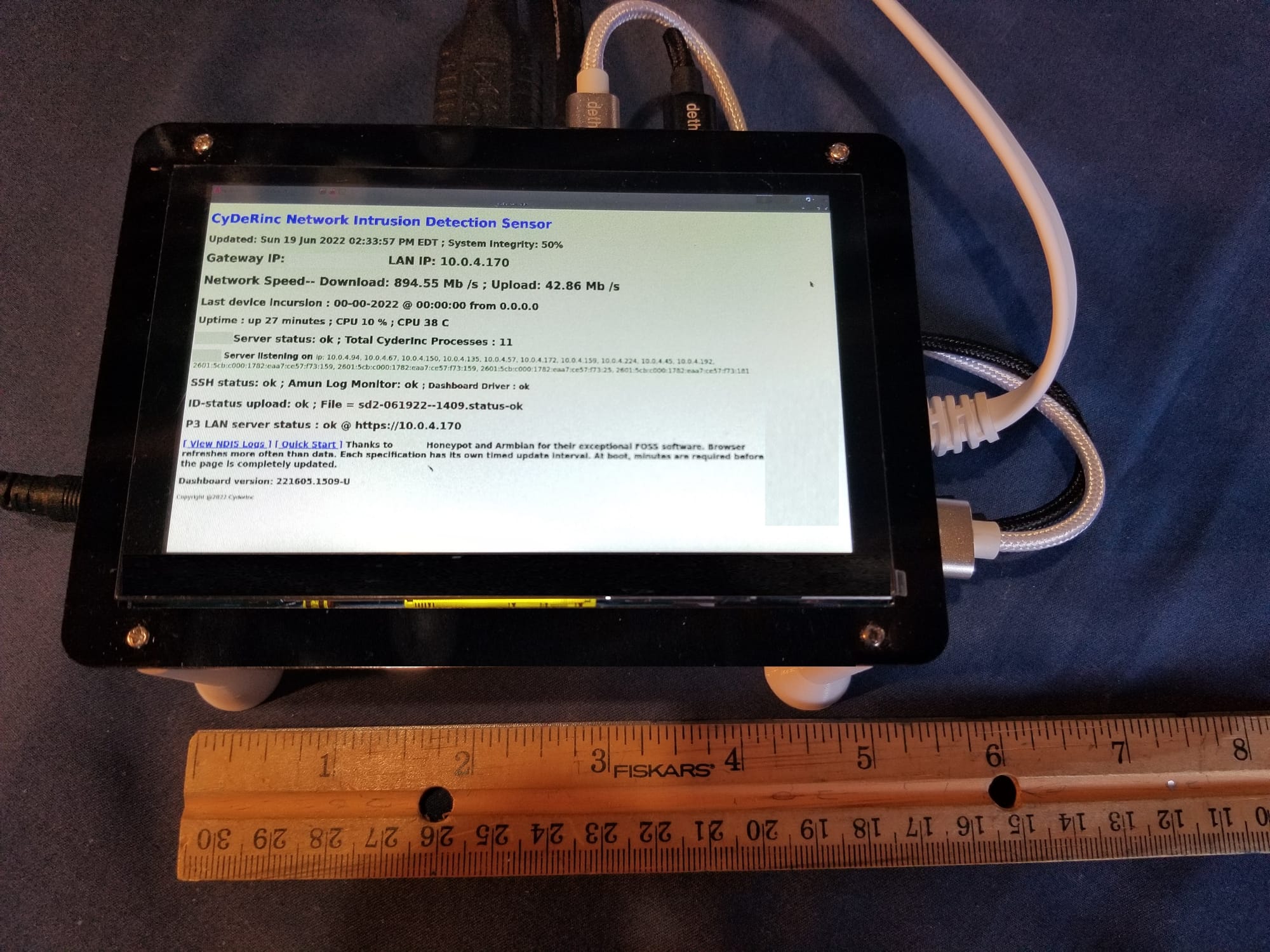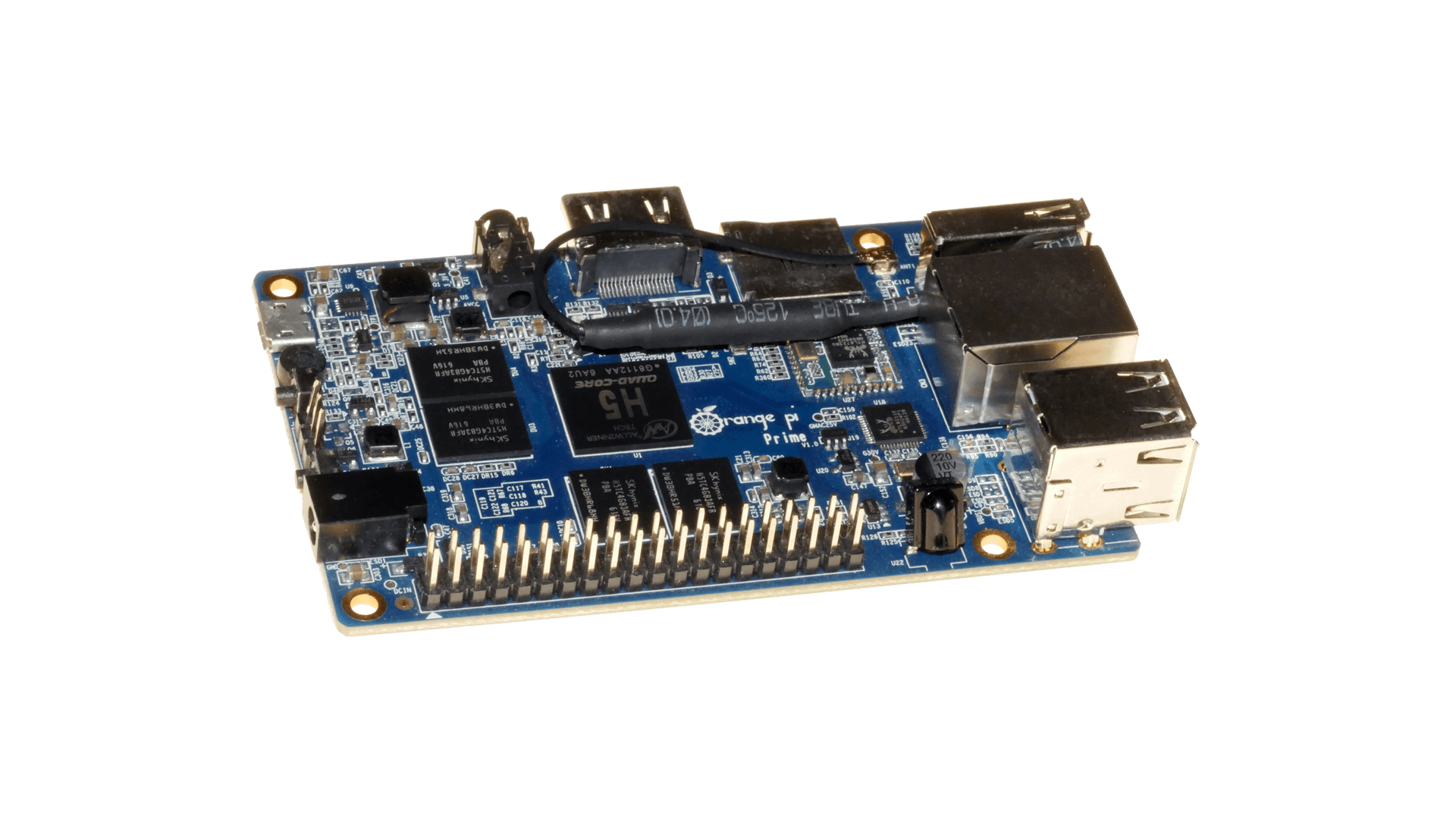CyderInc NIDS Devices

The small computer boards, called SoC's (System on Chip boards ) have been a growing fad for a number of years. The Raspberry Pi helped make them popular by having great manufacturer support and a lively community building things like robots and wifi access points with them.
These types of boards excel (no not the office program) at tasks that are basic behind the scenes data crunching. But, they are very weak when it comes to graphical processing. Watching videos, browsing the web, using it as a daily computer all provide poor user experience. These devices don't have the speed or the number of graphical processing units needed for daily multimedia activities ( video streaming/encoding, music streaming ).
But that's what makes these devices great for our cyber security purpose: we're heavy in the network traffic data analysis and light on the graphical needs. You'll see the CyderInc NIDS Dashboard is built using Chromium and HTML. The fake network servers ( called a honeypot) it runs that monitor for attacks are run in Python. Bash scripts tie it all together, making SoC boards perfect for this application.
The Orange Pi Prime that runs the CyderInc Network Intrusion Detection System can connect to your network over ethernet cable (plugged into the back of your router) or over your router's wifi. For speed and bandwidth usage reasons, the ethernet cable connection is preferred.
All the devices run the same programs, reporting its status to the CyderCloud every hour or two. Since there are several programs that need to work together, if one of the NIDS programs isn't functioning correctly, the status file will note which one. That status file is uploaded to the cloud and will show on the CyderCloud Dashboard that there is a problem with that device. Then, techs will remotely access the device to solve the problem or send a reboot signal, which often resolves the issue.
The versions of CyderInc software that are running on the devices are created for ARM (Pi boards) and x86_64 systems. The SoC boards draw only a few amps, a laptop maybe 20. But desktop computers use much more power, especially when you consider you have to run the desktop monitors as well. These issues make our business more environmentally friendly, using less power and reducing the carbon footprint.
Above is a picture of an Orange Pi Prime board, mounted on a 3d printed base which also mounts the small display. As you can see, the display isn't easy to read, so the Dashboard is made using large fonts. But, so you don't have to try to read such a small display, the device also runs a real server that lets you view the Dashboard from any browser on your LAN. You'll get an ID and password with the device that will let you access the dashboard from any browser on your network to review the logs, watch for alerts, and see the last time an attack happened. The logs show you all the information that is passed to the CyderCloud, which contain only device information necessary to ensure it is running correctly and information to fix it if it isn't.
Below is a picture of a bare Orange Pi Prime board:

CPU: Allwinner H5 4core CortexA63 x64 CPU @ <1.3GHz
GPU: Mali 450 GPU
Memory: 2G DDR3
Network: Gigabit NIC RJ45 ethernet connector
On-board Wifi & Bluetooth
GPIO: 40pin Raspberry Pi compatible
USB: 3 x USB2.0
Boot: sdCard
Other SoC boards, laptops, or netbooks may be used based on availability and environmental parameters. SoC boards are used headless for enterprise environments. For all subscription services, the CyderInc NIDS devices remain owned by CyderInc and must be returned if the subscription is not renewed or is cancelled.
Not affiliated with Orange Pi. All trademarks & rights remain property of their owners.


